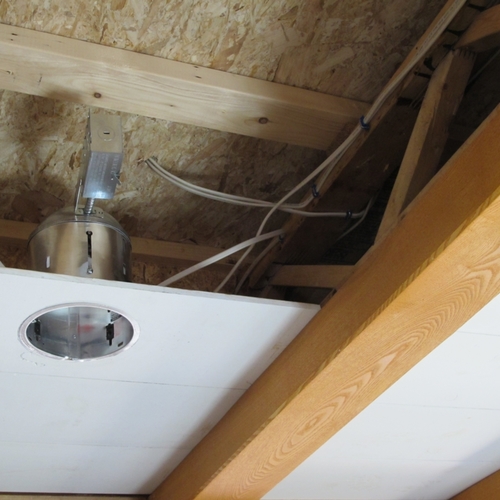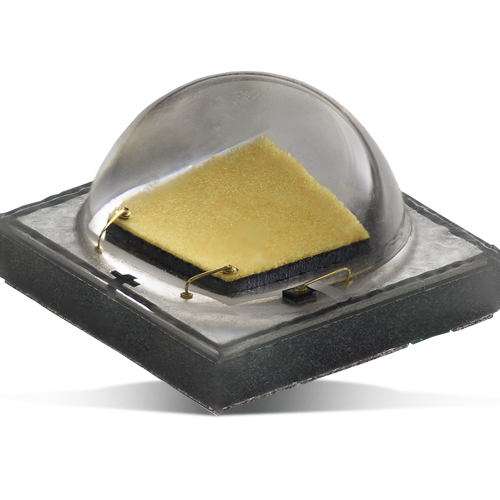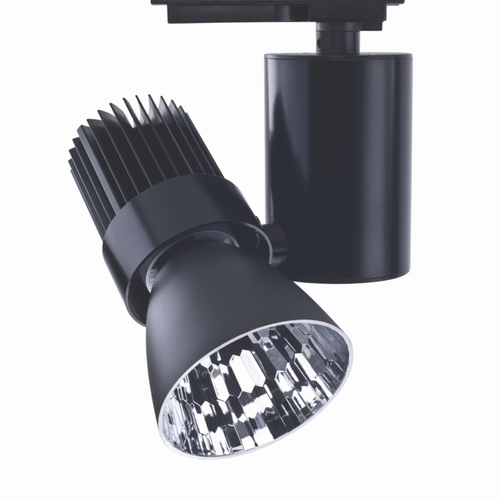
Streetlights using light-emitting diodes (LEDs) are designed to last longer and use less energy than conventional lighting, but it’s not working out that way in at least two U.S. cities.
Thousands of lamps installed in Detroit have failed prematurely, prompting a federal lawsuit against the manufacturer, The Detroit News reports.
The Public Lighting Authority’s suit against Leotek Electronics USA claims that 20,000 or more of the LEDs are dimming or burning out long before they were supposed to, and that the agency “expects a system-wide failure of Leotek’s luminaries in the short term.”
Detroit Mayor Mike Duggan says it may cost as much as $9 million to correct the problem. The LEDs were expected to last at least 10 years.
As part of an overhaul of the city’s lighting system, the city signed a deal with Leotek in March 2014 to buy more than 25,000 E-Cobra model LEDs in a variety of wattages for $3.9 million. Installing the lights was to cost about $5.2 million. In all, Detroit has about 88,000 streetlights, 40% of which didn’t work when the city undertook the upgrade.
The lamps came with a 10-year warranty. Last fall, routine inspections turned up a number of lamps that were “charred, burned or cracked,” the newspaper said. Leotek initially acknowledged the problem and said it would work with the city to correct the problem. Leotek’s failure to follow through prompted the lawsuit.
Leotek did not have a comment on the suit immediately but a spokesman said the company planned to issue a statement on the dispute.
Similar problem reported in California
Detroit isn’t alone in experiencing problems with Leotek LEDs. In Berkeley, California, Leotek has agreed to replace failing LED fixtures that are under warranty after higher-than-expected failure rates over the past year, Berkeleyside said in an online article in February.
Berkeley began replacing high-pressure sodium lamps with 8,000 LEDs in 2014. The LEDs were supposed to last between 15 and 17 years but the diodes in some of the lamps began failing last year. That left those streetlights burning, just not as brightly, and that prompted a number of complaints from residents about poorly list crosswalks and roadways.
Berkeleyside said said Leotek accepted responsibility for the failures and had offered to pay for replacement lamps. Who paid for the labor to install the new fixtures was up in the air. A call to the city’s spokesman was not returned.
The good news was that Leotek was updating the lights with a more efficient model that should save the city another 25% in energy costs when compared to the originals. The city borrowed $3 million from the California Energy Commission to buy the streetlights and uses the more than $400,000 in annual savings to pay off the loan, The Daily Californian said.
But no problems in Portland, Oregon
Portland, Oregon, is another city that replaced its high-pressure sodium lamps with LEDs from Leotek, but in contrast to Detroit and Berkeley it hasn’t had any unpleasant surprises. “They’re performing really well,” Bureau of Transportation spokesman Dylan Rivera said by telephone of the 45,000 LED streetlights the city has installed.
The city said the new lights would draw 29 watts, a 75% reduction from the 118-watt sodium vapor lights it had been using. The lamps could be expected to last for 24 years (100,000 hours of operation), which represented a sizable maintenance savings.
Rivera said the new streetlights were performing up to Portland’s energy expectations and the conversion represents the largest single carbon reduction strategy the city has put in place.
“Generally speaking,” he said, “people seem happy that we’re doing this.”
Weekly Newsletter
Get building science and energy efficiency advice, plus special offers, in your inbox.















31 Comments
This is news? Who hasnt paid through the nose for a freaking LED or CFL bulb that is supposed to last forever and yet burns out just as fast as the bulbs you used to pay $0.25 for? Who in the hell has the room to store the boxes and receipts to return them for warranty claim when they fail plus all the wasted energy and time getting the warranty exchange?
Tommy: Why would somebody put a guarantee on a box? Hmmm, very interesting.
Ted Nelson: Go on, I'm listening.
Tommy: Here's the way I see it, Ted. Guy puts a fancy guarantee on a box 'cause he wants you to fell all warm and toasty inside.
Ted Nelson: Yeah, makes a man feel good.
Tommy: 'Course it does. Why shouldn't it? Ya figure you put that little box under your pillow at night, the Guarantee Fairy might come by and leave a quarter, am I right, Ted?
Ted Nelson: What's your point?
Tommy: The point is, how do you know the fairy isn't a crazy glue sniffer? "Building model airplanes" says the little fairy, well, we're not buying it. He sneaks into your house once, that's all it takes. The next thing you know, there's money missing off the dresser and your daughter's knocked up, I seen it a hundred times.
Ted Nelson: But why do they put a guarantee on the box?
Tommy: Because they know all they sold ya was a guaranteed piece of sh_t. That's all it is, isn't it? Hey, if you want me to take a dump in a box and mark it guaranteed, I will. I got spare time. But for now, for your customer's sake, for your daughter's sake, ya might wanna think about buying a quality product from me.
Your story needs a script editor. On first read, I couldn't even follow what the point was. Kind of sounded like the ramblings of a crazy person, to be perfectly honest. I didn't go back for a second try.
Look up quotes from “Tommy Boy” and you’ll get it. :-)
>" Who hasnt paid through the nose for a freaking LED or CFL bulb that is supposed to last forever and yet burns out just as fast as the bulbs you used to pay $0.25 for? "
That would be me. I'm among the "Who" who hasn't had that experience.
I've never "...paid through the nose..." for new-tech lighting that suffered infant mortality. I've paid SMALL money for twisty CFLs that failed early, while others in the same model purchased at the same time & place that have gone a decade or more- a manufacturing quality control issue most likely, not a design problem or an inherent issue with the technology. I've retired CFLs still working after 15+ years of service to be replaced by LEDs of higher efficiency and better color rendering.
But Why does a round of comments on GBA every year or so to remind us that green building is an affront against right minded people everywhere.
I've still got the first CFL I bought, circa 1990 and it is still doing just fine in a lamp on a timer. It's been running for 4-5 hours a day for close to 30 years. Yes, it takes about 5 minutes to warm up to a decent color temperature. But still, the bulb probably cost $10.00 (an insane price in 1990) and compared to incandescent, it's probably saved $50.00 or more in electricity. A new LED would be even more efficient, but at this point, i don't have the heart to retire it. I'm just waiting to see if it dies before i do.
Like a modern Centennial Light!
https://en.m.wikipedia.org/wiki/Centennial_Light
True that But Why. I have have had nothing but problems with LED's.
For a fun experiment try this. In a hall way or closet lit with LED with no natural light, hold your hand out in front of you and wave at the wall back and forth real fast. Besides making you feel nauseous and dizzy your hand will appear to be in slow motion or pixilated. Its very weird. I have shown this to a number of people on the construction site and everyone has the same reaction..."whoa weird."
Cheap LEDs flicker at 60Hz. Incandescent bulbs did too, but had enough thermal mass in the filaments that they were slow to react and buffered the effect to the point it was not really an issue.
Stadium lighting is known for the same thing, and pro sports photographers’ cameras are able to time the shutter to take an image while the lights are “on”. Without that ability, short exposure shots ran the risk of being under exposed if they got the lights while dim in between peaks in the line voltage.
Must be really, really cheap, as LED's are DC devices and usually require rectification from AC to DC. That's not to say that these "cheapies" are powering their LED's on the postive part of the AC waveform only.
Rectifying an AC signal with too little or no capacitance can result in a dirty DC supply with lots of waveform left in it.
The cheapest LEDs, like Christmas tree string lights, don’t even use a rectifier, relying solely on the diode function of the LED to operate on one half of the waveform. These are the worst type, and I wouldn’t doubt some cheaper bulbs operate like this also.
I should add that PWM (Pulse Width Modulation) is a very popular way to control the light output of LEDs. In a nutshell, it’s a pulsed signal at a high frequency that determines the duty cycle of the die, or what percentage of time it spends on vs off.
This can also cause that same strobe effect, though most single intensity light bulbs won’t use this. Car tail/brake lights often do, allowing them to go from low to full output when the brakes are applied. This is why they look strobe-ish if they move quickly through your field of view, and why they appear to pulse when recorded on video cameras.
DRLs in car headlights do this as well, and are very obvious in some car review videos.
Some more info below. Note that 50% less light is of little concern to photographers.
http://proceedings.dtu.dk/fedora/repository/dtu:2340/OBJ/x087.421-427.pdf
Today’s camera sensors are so good that they’re not too worried about it. It’s mainly a marketing thing the camera companies were bragging about a while back.
I was just mentioning it as stadium lighting and the word “cheap” are probably not mentioned together too often. ;-)
I've purchased many CFLs at full price back 10-14 years ago and most died in the 3rd year. I date them all when I install. Then 9 years ago paid $90 for some nice LEDs from what was considered the best manufacturers and now they've all gone bad. I certainly lost money on that deal but just hope it turns around. Our problem in the north with street lamps is the heat put off from the LEDs is not transmitted to the lens so during NE storms, the snow packs them and no more light. Very bad. Now the city has to run around cleaning them off fast.
I’ve had many CFLs die prematurely. I was never happy with them from day one (slow to warm up) and replaced them with LEDs as soon as they were available.
I’ve had a few LED bulbs fail prematurely, but both times the companies (Cree and Feit) were eager to send replacements to keep me happy.
For the most part I’ve been happy with my LED bulbs, and I think this is partly due to staying away from the cheaper stuff sold online. I have mainly Phillips, Cree and Feit bulbs purchased through Home Depot and Lowe’s. Most of them were very affordable when using the Save-ON-Energy rebates from the province of Ontario.
When I hear about LED lights failing early or dimming, the first thing that comes to mind is a poorly designed system.
LED dies need proper cooling. Designing a bulb or fixture that fails to keep the LEDs in their proper temperature range will drastically reduce the life of the die.
LEDs that fail suddenly and completely seem to do so mainly due to faulty driver circuit components. Again, heat can be an issue if not designed for, but substandard components that fail are also a problem. Cheap unreliable semiconductors plague electronics these days, and LEDs are not immune.
I did add aluminum fins for cooling to a few but didn't make a difference. If you bust them apart you'll see the driver components are Chinese junk and thinner than normal solder joints. I've heard the ones made in Indonesia are better.
The country where it's manufactured is irrelevant from a quality/longevity point of view. The design, component specifications, and manufacturing quality control is up to the vendor.
The term "Chinese junk" really only applies to antique sailing ships. There are extremely high quality as well as low quality and mid-quality goods being manufactured in China, as in most industrialized countries . In highly price sensitive product markets quality often suffers at the lower priced end. With LEDs, the units that don't fail will eventually drive the rest out of the market.
Well in Paul's defense Chinese manufacturers are known for sub-contracting out their work to downstream firms in order to "spread the wealth" and remain profitable. The product from these downstream factories is intermingled with the "Customer facing" factory and needless to say some of it fails prematurely. It's a constant battle per family who have facilities in China.
FYI the LEDs themselves still usually work fine. I've made some amazingly bright work lamps with the lamps I tore apart and used new drivers.
I asked my local power/ lighting company why they weren't converting our cities street lights to LED and they responded that it was still cheaper to run standard bulbs. We have cheap power 3.5 cents/kwh. Just as well LED lights produce no red light spectrum so they are not a good light to operate at night.
>"LED lights produce no red light spectrum so they are not a good light to operate at night."
I'm not sure where that bit of disinformation comes from.
LED luminaires produce whatever spectrum the designer puts into them. That includes red, necessary to deliver a reasonable color rendering index (CRI). Even outdoor streetlight LEDs with "daylight" color temperature of ~5000 Kelvin or higher usually have a reasonable CRI, higher than the sodium or mercury arc technology they replaced. Only the cheapest units based on blue LED with single phosphor coatings would be (nearly) devoid of red spectrum.
" they are not a good light to operate at night."
Isn't the whole reason to turn on a light because it is dark?
>"Isn't the whole reason to turn on a light because it is dark?"
That's the way me an' my homies usually do it, but we're not into forcing others to follow suit. :-)
Street lights should not emit blue or even daylight levels of light. It interferes with our circadian rhythm.
The LED street lights in our subdivision are a warm white colour, probably about 3000K if I had to guess. Definitely not “daylight” white.
Our street lights are quite a bit brighter than before and have a much wider light spread. The overall effect is a much more evenly lit neighbourhood. A very positive change in my opinion, and I’m very critical of lighting in general. If they last as intended I’m all for it.
>"Street lights should not emit blue or even daylight levels of light. It interferes with our circadian rhythm."
Or you could stop sleeping / reading on the street under street lights. ;-)
Unless your bedroom window is in the direct glare of a 5000K+ street light and you can't afford window shades I wouldn't sweat this one. Human exposures to street lights is in no way comparable to staring into backlit computer / television / phone screens for hours on end.
I'm not aware of any studies of how the color temperature of streetlight affects the circadian rhythms of urban wildlife, which might be significant. The effects of street lighting on street trees gets some attention.
There is no 24 year warranty on LED lights and the fact that they are being marketed as a way to save money is a lie. There is no ROI on lights. The lights will all be dead within 10 years. (Most only warranties for 5) when they die and you have to replace them you will not be lowering your power again to pay for them. They will cost millions again but with no way to save money to pay for them. This is happening on a much smaller scale in businesses across the country but newspapers aren’t writing articles about it to inform the country. FAKE ROI!
Help me out with the math a bit. I'm building a house and decide to put in ceiling-mounted flush fixtures. I buy this one for ten bucks: https://www.homedepot.ca/product/commercial-electric-4-in-flat-downlight-8-5w-500lm-36000h-30k-es-dim-single-pack/1001213223 which includes bulb and integral fixture box.
What are the cheaper incandescent alternatives over the five years it is warrantied for?
You would have to research all the other cheaper options but truthfully it doesn’t matter. If the light was on 24 hrs a day 365 days a year it would burn 6.205 KW per month. Assuming you pay .11 per KW it’s costing you .68 per month on the power bill. When it dies you can never lower the power use again so there is no savings to pay for it. You Can Not save money buying lighting. Especially for your home. It is good to lower the energy use and the LED lighting is better but you will not save money.
Log in or create an account to post a comment.
Sign up Log in